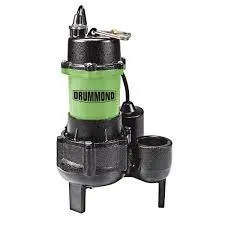English
- Afrikaans
- Albanian
- Amharic
- Arabic
- Armenian
- Azerbaijani
- Basque
- Belarusian
- Bengali
- Bosnian
- Bulgarian
- Catalan
- Cebuano
- Corsican
- Croatian
- Czech
- Danish
- Dutch
- English
- Esperanto
- Estonian
- Finnish
- French
- Frisian
- Galician
- Georgian
- German
- Greek
- Gujarati
- Haitian Creole
- hausa
- hawaiian
- Hebrew
- Hindi
- Miao
- Hungarian
- Icelandic
- igbo
- Indonesian
- irish
- Italian
- Japanese
- Javanese
- Kannada
- kazakh
- Khmer
- Rwandese
- Korean
- Kurdish
- Kyrgyz
- Lao
- Latin
- Latvian
- Lithuanian
- Luxembourgish
- Macedonian
- Malgashi
- Malay
- Malayalam
- Maltese
- Maori
- Marathi
- Mongolian
- Myanmar
- Nepali
- Norwegian
- Norwegian
- Occitan
- Pashto
- Persian
- Polish
- Portuguese
- Punjabi
- Romanian
- Russian
- Samoan
- Scottish Gaelic
- Serbian
- Sesotho
- Shona
- Sindhi
- Sinhala
- Slovak
- Slovenian
- Somali
- Spanish
- Sundanese
- Swahili
- Swedish
- Tagalog
- Tajik
- Tamil
- Tatar
- Telugu
- Thai
- Turkish
- Turkmen
- Ukrainian
- Urdu
- Uighur
- Uzbek
- Vietnamese
- Welsh
- Bantu
- Yiddish
- Yoruba
- Zulu
Telephone: +86 13120555503
Email: frank@cypump.com
Oct . 18, 2024 10:36 Back to list
Submersible Agitator Pumps for Efficient Liquid Mixing and Handling Solutions
Understanding Submersible Agitator Pumps A Comprehensive Overview
Submersible agitator pumps are a crucial component in various industrial and municipal applications, specifically designed to handle slurry, wastewater, and other challenging liquids. These pumps operate under the fluid surface, thus eliminating the need for a separate pumping station and reducing installation costs. With their ability to mix and pump simultaneously, they play a vital role in several processes, enhancing efficiency and performance.
Design and Functionality
The design of a submersible agitator pump typically includes a robust motor encased in a water-tight housing, which is designed to be submerged in the liquid being pumped. The most distinguishing feature of these pumps is the agitator, a mechanical device attached to the pump's impeller. This agitator is responsible for stirring up the liquid, ensuring that solids remain in suspension, which is particularly important when dealing with sludge or other viscous materials.
When the pump is activated, the built-in agitator creates turbulence, allowing the pump to draw liquid from the bottom of the tank or pit. This dual action of mixing and pumping helps prevent sedimentation, allowing for a more consistent flow and reducing the risk of clogging—one of the major challenges in wastewater management.
Applications
Submersible agitator pumps are utilized in a wide range of applications across different sectors. In municipal wastewater treatment, they are used to transport sewage and sludge, ensuring that waste is effectively managed and treated. In industrial settings, these pumps are adept at handling slurry in mining operations, food processing, and chemical manufacturing, where the movement of liquid mixed with solid particles is often required.
Additionally, these pumps are also applied in agricultural settings, particularly for irrigation and drainage systems. They can efficiently improve water management by mixing fertilizers or other additives within the water supply, promoting better nutrient distribution.
submersible agitator pump

Advantages
One of the key advantages of submersible agitator pumps is their efficiency. By mixing and pumping at the same time, they minimize energy consumption and operational costs. This integrated design also results in reduced space requirements, making them suitable for installations with limited space.
Moreover, the submersible design protects the motor from external elements, significantly extending the life of the pump. Maintenance is generally easier compared to traditional pumps, as they can often be removed without much hassle for repairs or inspections.
Considerations
While submersible agitator pumps offer numerous benefits, there are important considerations to keep in mind. The choice of materials is critical, especially in environments with corrosive substances. Pumps made from stainless steel or other resistant materials are recommended to enhance durability.
Also, proper sizing and selection of the pump are essential to ensure optimal performance. Factors such as the viscosity of the liquid, the type and size of solids, and the required pumping height must be evaluated to select the right pump for specific applications.
Conclusion
In conclusion, submersible agitator pumps are essential tools in managing challenging liquids across various industries. Their unique design allows for effective mixing and pumping, making them ideal for handling wastewater, slurry, and viscous liquids. With their numerous advantages, including efficiency, reduced space requirements, and enhanced durability, they have become indispensable in modern fluid management systems. Whether in municipal applications or industrial processes, submersible agitator pumps are pivotal in optimizing operations and ensuring efficient liquid handling. As industries continue to evolve, these pumps will undoubtedly play an increasingly important role in meeting the demands of fluid management.
-
ISG Series Vertical Pipeline Pump - Chi Yuan Pumps Co., LTD.|Advanced Hydraulic Design&Energy-Efficient Solutions
NewsJul.30,2025
-
ISG Series Vertical Pipeline Pump - Chi Yuan Pumps Co., LTD.
NewsJul.30,2025
-
ISG Series Vertical Pipeline Pump - Chi Yuan Pumps Co., LTD.|energy-efficient fluid handling&industrial durability
NewsJul.30,2025
-
ISG Series Vertical Pipeline Pump - Chi Yuan Pumps | Advanced Engineering&Industrial Efficiency
NewsJul.30,2025
-
ISG Series Pipeline Pump - Chi Yuan Pumps | High Efficiency, Energy Saving
NewsJul.30,2025
-
ISG Series Vertical Pipeline Pump-Chi Yuan Pumps|High Efficiency&Reliable Performance
NewsJul.29,2025










